- Quick Read
- Deep Read ( 6 Min. )
In Today’s Issue
Monitor Daily Podcast
- Follow us:
- Apple Podcasts
- Spotify
- RSS Feed
- Download
TODAY’S INTRO
A trend you probably won’t hear much about
 Mark Sappenfield
Mark Sappenfield
Here’s something I’m sure you’ve noticed. The media covers something comprehensively when it goes bad. Not so much when it shows signs of turning around. Take violent crime. Many Americans think it is much worse than it is because of how we talk about it – often in a distorted or negative way.
Today, we’re taking on U.S. housing prices, which are high and don’t tend to turn on a dime. But there are some signs of a nascent shift. And you should know that. Potentially good news is still news.
Share this article
Link copied.

Help fund Monitor journalism for $11/ month
Already a subscriber? Login

Monitor journalism changes lives because we open that too-small box that most people think they live in. We believe news can and should expand a sense of identity and possibility beyond narrow conventional expectations.
Our work isn't possible without your support.
Millennials tiptoe toward better chance for homeownership
Mortgage rates are down a full point since peaking last October – raising hopes that an extraordinarily tough housing market is finally about to ease, a boon for those eager to build wealth through homeownership.

-
Leonardo Bevilacqua Staff writer
Michael Alas is thinking about buying his first home. It depends, in part, on whether he lands a job that he’s interviewed for. It would mean more money and a move – from rural Mississippi where he works as a college recruiter to the state capital, Jackson.
Like a lot of millennials, the 30-something Mr. Alas is slower than people in prior generations to pursue this piece of the American dream. Nevertheless, hopes are on the rise that an extraordinarily tough housing market is finally about to ease.
Mortgage rates are down a full point since peaking at a two-decade high last October – and are expected to fall further as the Federal Reserve begins cutting interest rates later this year. Falling rates should convince more homeowners to sell and more homebuyers to buy. Last month, more homes came on the market than in any four-week period in three years.
Still, the adjustment is likely to be slow. And the longer this adjustment takes, the greater the wealth gap between current homeowners and young adults who can’t afford to buy a home. This gap yawns widest for low-income renters and people of color, trends that threaten to make America’s existing wealth disparities even greater.
Millennials tiptoe toward better chance for homeownership
Michael Alas is thinking about buying his first home. It depends, in part, on whether he lands a job that he’s interviewed for. It would mean more money and a move – from rural Mississippi where he works as a college recruiter to the state capital, Jackson.
“I never thought I’d even consider this,” he says. But “I realize it is more of a possibility than it was last year and the year before and the year before that.”
Like a lot of millennials, the 30-something Mr. Alas is slower than people in prior generations to pursue this piece of the American dream. Nevertheless, hopes are on the rise that an extraordinarily tough housing market is finally about to ease.
Mortgage rates are down a full point since peaking at a two-decade high last October – and are expected to fall further as the Federal Reserve begins cutting interest rates later this year. Falling rates should convince more homeowners to sell and more homebuyers to buy. Last month, more homes came on the market than in any four-week period in three years, according to real estate brokerage Redfin.
Still, the adjustment is likely to be slow. Mortgage rates may not come down by much this year. Construction companies aren’t building enough new homes to satisfy demand. And many young adults are still struggling to pay off student debt.
The longer this adjustment takes, the greater the wealth gap between current homeowners and young adults who can’t afford to buy a home. This gap yawns widest for low-income renters and people of color, whose parents typically can’t help with down payments. These trends threaten to make America’s existing wealth disparities even greater.
A decline in mortgage rates “will certainly improve affordability for some households,” says Carolina Reid, professor of city and regional planning at the University of California, Berkeley. But “the age and the wealth and the income disadvantages all intersect and are particularly pronounced for Black and Hispanic households.”

Coleman Hemsath, 31, is one of the fortunate ones. After paying some $3,000 a month for a small place in Manhattan, he and his partner moved recently into a two-bedroom house in Jersey City, New Jersey. “We were in a cramped apartment,” he says. “We have a dog. It was time to get serious – [and] also a yard.”
In many ways, Mr. Hemsath is ahead of his generation. Younger than the average first-time homebuyer – who is 35, the National Association of Realtors reported last year – he has more time to take advantage of home price appreciation and tax deductions to grow his wealth. A 2018 Urban Institute study found that those who bought a home before age 35 amassed nearly twice the housing wealth of those who waited until later to purchase their first home.
Kenji Jimenez, a renter in Pomona, California, falls in the latter category.
It’s not for lack of effort. In his early 40s, Mr. Jimenez has been looking for two years and has worked hard to improve his credit rating. Even though rent consumes nearly half his $40,000 income, he has cobbled $30,000 to $35,000 together for a down payment.
But given that he lacks a co-signer, his income is too low to qualify for a bank loan for the $450,000 to $500,000 homes he’s looking at. And he has no relatives with the financial wherewithal to co-sign. But this father of three teenagers remains determined.
“Might as well try to transition over,” he says. “I’d rather struggle on my own dime.”
The delay for first-time homebuyers has been building for some time. Three decades ago, nearly half of 25-to-34-year-olds owned a home. Now, it’s fewer than 1 in 3, when measured on an individual basis, according to an Urban Institute study last year. By focusing on individuals rather than households, which the U.S. Census Bureau considers, the study exposes an additional trait of millennials: They’re not forming households at the same rate as their parents.

Instead, they’re living with parents, relatives, or friends, delaying marriage and children. “It’s part inability” for financial reasons, says Michael Seiler, real estate and finance professor at William & Mary in Williamsburg, Virginia. “But it’s also a lack of desire. ... Homeownership is the American dream? I don’t think young people share that philosophy.”
This change comes against a backdrop of two decades of dramatic tumult in the housing market that is unprecedented in postwar America, says Professor Reid of UC Berkeley. Home prices soared in the easy credit era of the early 2000s, crashed after the 2007-2009 financial crisis, and then soared again when mortgage rates fell to near-record lows. As late as 2022, homebuyers were scrambling to snap up homes before mortgages climbed too high.
High mortgage rates then hit the housing market with a double whammy. Not only did they prevent first-time homebuyers from buying, but they also discouraged older sellers from selling. Having locked in a low mortgage rate on their current home, would-be sellers didn’t want to buy another home with a higher interest rate.
Now that mortgage rates have eased a bit, more buyers are emerging, but their composition has changed, says Jung Hyun Choi, a principal research associate at the Urban Institute. They have higher incomes, more education, and a greater ability to put down more than 20% on a house.
“The market was slower, but as of mid-February, the market has been crazy,” says Francesca Lampert, a real estate agent in Menlo Park, California, where the median sales price tops $2 million. “We’ve had a lot of buyers the past two weeks reaching out, ready to jump into the market. They say, ‘We don’t care. ... We need to jump in, and get a piece of this action, and start building equity for ourselves, despite interest rates.”’
Another plus: House-flipping, the purchase of homes for remodeling and quick resale, which surged to new highs in 2022 and drove up home prices, especially at the lower end, has fallen dramatically.
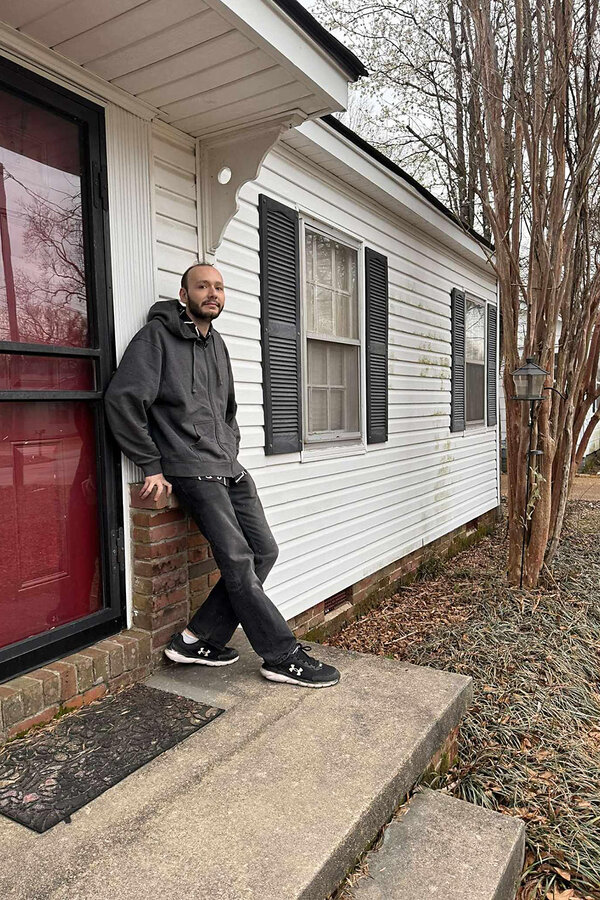
Eventually, some experts say, the market should adjust to allow more than only high-earning millennials to afford their first home. The gap isn’t just financial. The affordability crisis has hit people of color especially hard, with 37% of Hispanic and 39% of Black renting households priced out of a median-priced home between March 2022 and March 2023, according to a study last summer by the Joint Center for Housing Studies at Harvard University.
The challenge is that the longer the market adjustment takes, the more inequality the current imbalance creates.
Cities are looking to boost supply by loosening zoning rules on new home construction, although so far, restrictions on new housing keep getting tighter, says Professor Seiler.
“We need more targeted policies on the demand side,” says Ms. Choi of the Urban Institute. She points to assistance programs to help first-time buyers with down payments and credit programs that target specific neighborhoods or areas. Although federal legislation has stalled in Congress, some federal and state agencies target assistance for certain geographies or help renters establish credit through rental payments.
Last year, Gio Tundo bought his first home in Cleveland, Mississippi, with no down payment, thanks to a rural development loan through the U.S. Department of Agriculture, his employer. The 20-something biological sciences technician also qualified for a low-interest loan, which made payments on his $100,000 home as cheap as the cost of renting a place, he says. “I’m in a pretty decent situation.”

Today’s news briefs
• Aid to Gaza by sea and land: A ship carrying more than 200 tons of aid for Gaza leaves Cyprus in a pilot project to open a sea corridor to deliver supplies to starving Palestinians on the verge of famine.
• U.S. moves to limit “judge shopping”: Federal courts are moving to make it harder to file lawsuits in front of judges seen as friendly to a point of view, a practice known as judge shopping.
• Uvalde police chief resigns: The Uvalde, Texas, police chief who was on vacation during the Robb Elementary School shooting resigns.
• It’s official, Biden vs. Trump: President Joe Biden and former President Donald Trump both clinch their parties’ nomination, kicking off the first U.S. presidential election rematch in nearly 70 years.

Congress takes a hard swing at TikTok
Washington has long been grappling with how to curb the influence of a popular social media app linked to the Chinese Communist Party. The House bill passed with strong bipartisan support, but faces an uncertain path in the Senate.
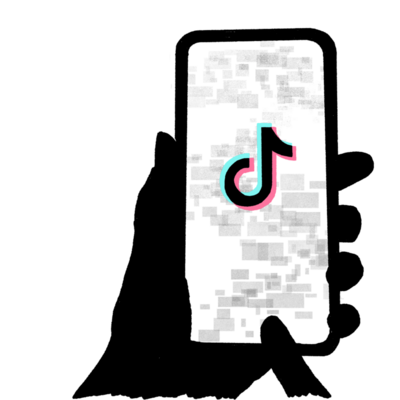
- Quick Read
- Deep Read ( 6 Min. )
In a show of bipartisan momentum rarely seen in Washington these days, the House overwhelmingly passed a bill that would force TikTok’s Beijing-based parent company to divest in order for the platform to continue operating in the United States.
“We ... have concerns about a substantial news source being weaponized by a foreign competitor in ways that are very, very dangerous for our society,” says Republican Rep. Jay Obernolte of California, the only member of Congress with an advanced degree in artificial intelligence.
Still, the bill, which President Joe Biden supports, faces an uncertain future in the Senate. TikTok, initially caught off guard, has launched a major pressure campaign to kill it, with high-profile lobbyists working both sides of the aisle and a flood of teenagers calling congressional offices. There could also be legal challenges.
The high-stakes effort could affect everything from youth engagement in politics to the U.S.-China relationship. It also may set the tone for how Congress addresses broader concerns about social media and its impact on young people. Lawmakers say they’re well aware of the risks, given that the bill could potentially force the demise of a popular platform used by about a quarter of American voters.
Congress takes a hard swing at TikTok

GOP Rep. Mike Gallagher, a former Marine Corps intelligence officer, has been trying for years to curb TikTok’s influence in the United States. Not just because he – a father of two young daughters – is worried about its influence on teens. But also because he’s made it his mission to take on the Chinese Communist Party and what he sees as its efforts to undermine American democracy.
To the Wisconsin Republican, this social media app – whose parent company is based in Beijing – is a Trojan horse. He argues it allows a foreign adversary to pit Americans against each other, meddle in U.S. elections, and influence 170 million U.S. users with Chinese propaganda.
Still, initial efforts to address these concerns seemed to go nowhere. When former President Donald Trump tried to ban TikTok, he “ran into a legal buzz saw,” Representative Gallagher recalled Tuesday outside the House chamber. Mr. Gallagher put forward a different bill that stalled. Six months ago, the effort looked dead, he said.
But quietly, Mr. Gallagher, who last year was put in charge of a new special House committee on China, was working with his Democratic counterpart Rep. Raja Krishnamoorthi and the White House. Together, they shaped a new bill that was narrow and targeted, and that they believe will stand up to legal scrutiny. It would force TikTok and any other websites and apps controlled by a foreign adversary to be sold from their parent companies in order to continue operating in the U.S.
“We were able to learn from our own previous mistakes, and then work collaboratively across the parties and across the branches,” said Mr. Gallagher, who is leaving Congress at the end of this term.
In a show of bipartisan momentum rarely seen in Washington these days, the bill, which was only unveiled last week, unanimously sailed through the Energy and Commerce Committee. Wednesday it passed the full House with overwhelming support, 352-65.
But while President Joe Biden said he would sign the bill into law, it still faces an uncertain future in the Senate amid intense lobbying from TikTok. Critics say that by prohibiting app stores and internet providers from making TikTok available so long as it remains under foreign ownership, the bill could also run into the kind of legal challenges on First Amendment grounds that have halted other such efforts – including a ban by the state of Montana.
The high-stakes effort could have a direct impact on everything from young Americans’ engagement in politics to the increasingly fraught U.S.-China relationship. It also may set the tone for how Congress addresses growing concerns about social media in general – particularly its influence on impressionable young Americans, many of whom now get their news primarily from TikTok. Lawmakers say they’re well aware of the risks, given that the bill could potentially force the demise of a popular platform used by about a quarter of American voters if TikTok’s parent company refuses to divest.
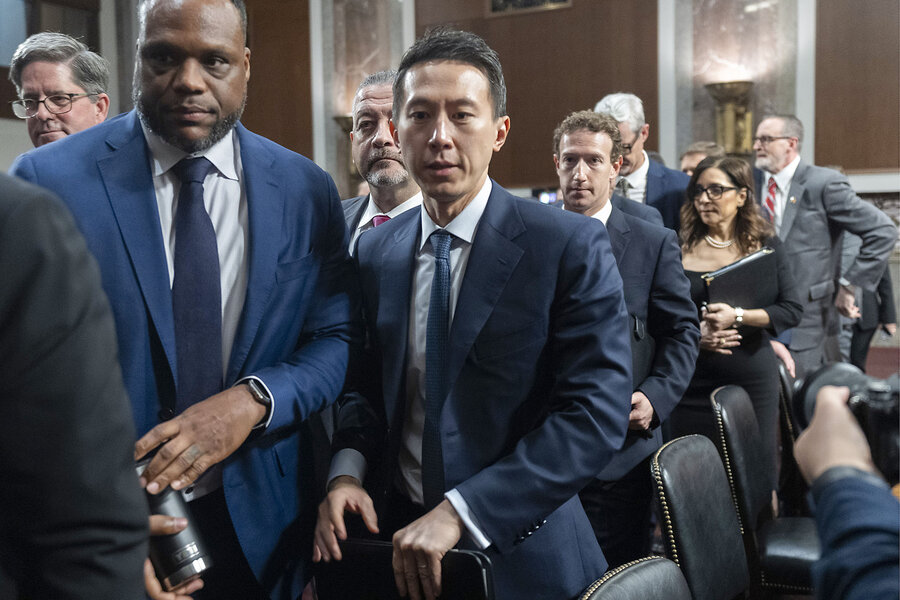
“Most of us shudder at the thought that we’re going to empower a federal government to make those decisions” says GOP Rep. Jay Obernolte of California, the only member of Congress with an advanced degree in artificial intelligence. “But we also have concerns about a substantial news source being weaponized by a foreign competitor in ways that are very, very dangerous for our society.”
The bill is not without its detractors, particularly in the Senate, where the chamber’s slower pace could give lobbyists, users, and critics more time to erode support. Lawmakers opposed to it say the House bill was rushed, unfairly singled out TikTok from other social media platforms, and didn’t adequately articulate the national security concerns to the public – including the more than 5 million small-business owners who rely on the app.
“I have serious questions surrounding the urgency and the speed with which this passed through the House,” says New York Democrat Alexandria Ocasio-Cortez, a “no” vote who says she didn’t receive satisfying answers from colleagues on either side of the aisle. She also raised concerns about Congress justifying legislation based on classified information, saying that “the American people deserve, at least in broad brushstrokes, to know” the nature and scope of the purported national security threat.
TikTok, initially caught off guard by the bipartisan momentum for the bill, has launched a major pressure campaign to kill it, with high-profile lobbyists working both sides of the aisle. Last week, the app began urging its users to call their members of Congress – a push that led to a flood of phone calls to Capitol Hill from outraged teenagers.
After the House vote, a group of teens who had been in the public gallery seemed confused about what, exactly, had happened. “Does this mean TikTok will be banned?” one asked glumly.
Mr. Trump, who previously had called TikTok a national security threat, recently reversed course and said the bill could further consolidate the power of Facebook, which he called an “enemy of the People.” Critics noted that the former president and presumptive Republican nominee changed his position after a meeting with Jeff Yass, a key financier of the conservative PAC Club for Growth and a billionaire investor whose personal stake in ByteDance, TikTok’s parent company, is estimated at three-quarters of his net worth.
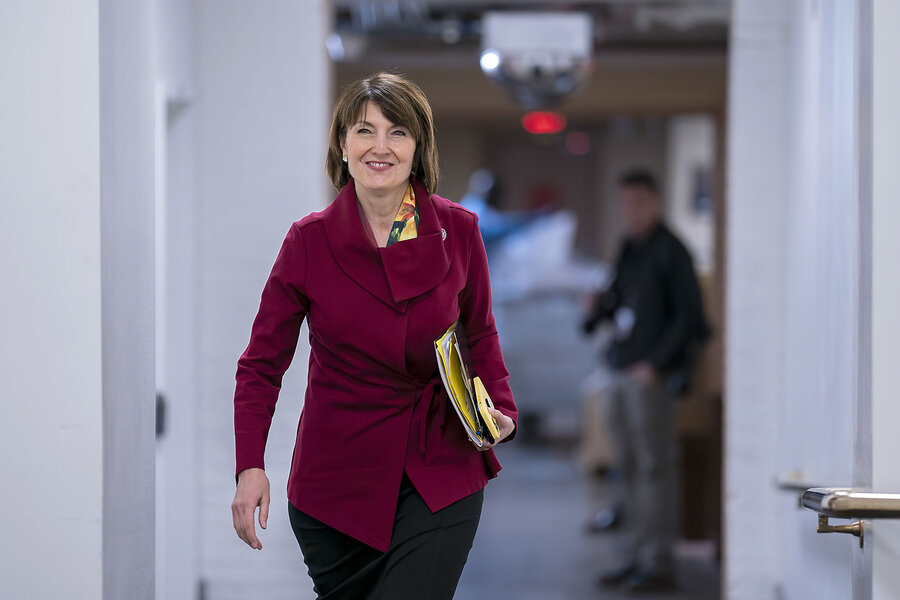
Energy and Commerce Chair Cathy McMorris Rodgers of Washington state, who also worked for months behind the scenes to get this bill across the finish line, says a marathon hearing she conducted with TikTok CEO Shou Zi Chew a year ago was a turning point. She says that for both Republicans and Democrats, it exposed the company’s lack of transparency and honesty regarding its relationship with its Chinese parent company and the extent to which it is beholden to Beijing.
“There was this sense that we need to act in order to protect the United States of America from what is really a tool of the Chinese Communist Party,” she says.
The bill mentions only TikTok by name, but it opens the way for the president to prevent any website or app controlled by a foreign adversary – defined as China, Iran, Russia, or North Korea – from operating in the U.S. It would require ByteDance to sell TikTok within 180 days, a prospect that has raised antitrust concerns since prospective buyers are likely to be deep-pocketed tech companies.
A key U.S. concern about TikTok is how much information the app collects – including biometric faceprints and voiceprints, according to the company’s own website – and how it might be shared. To address those concerns, the company has already spent $1.5 billion to sequester U.S. user data, a TikTok executive wrote to Representatives Gallagher and Krishnamoorthi this week, warning that divestment could make user data less safe.
On March 7, as the Energy and Commerce Committee was holding a classified briefing on the legislation, TikTok sent users a pop-up saying the app was at risk of being shut down in the U.S. and, after asking for their ZIP code, directing them to call their representative.
Representative Krishnamoorthi half-joked that congressional offices were flooded with callers asking things like, “What is Congress? What is a congressman? Give me my TikTok back.”
Initially, there was uncertainty as to how strong the Democratic support for the bill would be. But after the classified briefing from national security officials and the flood of calls from TikTok users, the committee voted 50-0 in favor.
“It boggles the mind that TikTok would turn around and demonstrate that their app can be politically weaponized,” says Representative Obernolte, who sits on the committee. “I guarantee you the vote would not have been unanimous if they had not done that.”

How Russian elections became a futile exercise for opposition
Russia’s presidential election appears largely a rote exercise, as a popular, unchallengeable leader faces only nominal competition from three “systemic” opponents. The Kremlin has worked for years to make it this way.

- Quick Read
- Deep Read ( 4 Min. )
Russians will go to the polls this weekend, nominally to select the country’s next president. But the outcome is already a foregone conclusion: another term for Vladimir Putin.
Officially there are three candidates running against Mr. Putin, each from a loyal opposition party. Each may differ with the Kremlin on a variety of issues, but never on vital foreign policy or the war in Ukraine.
“Unlike the last presidential election in 2018, the number of candidates is small and the differences between what they say is negligible,” says Nikolai Petrov, an expert with Chatham House in London. “Now we see, step by step, the Kremlin attacks all places where some kind of political life was going on.”
At one time, some believed that the system of “managed democracy” set up under Mr. Putin might become more representative of Russian society. But now, amid war and confrontation with the West, the political options available to Russians who wish to express dissatisfaction have narrowed drastically.
Yet Mr. Putin has gained in popularity, says Denis Volkov, director of Russia’s only independent opinion agency. The war “has put the lack of alternatives into the background. Now the majority thinks Putin is the person who can protect them against the West.”
How Russian elections became a futile exercise for opposition
Last November, Yekaterina Duntsova announced that she would run for Russia’s presidency as a peace candidate. A month later, the small-town journalist, mother, and former municipal deputy was barred from the ballot by the electoral commission.
Undeterred, Ms. Duntsova decided to start a new party to address what she describes as the “vacuum of political choices” for Russians.
“Something is wrong in the country; people can feel it,” she says. “I have been shown a lot of support from many around me, people who want to see alternatives to the tough politics of today. This energy should be channeled into creative activities.”
But while no one appears to be overtly trying to stop Ms. Duntsova from starting her grassroots party, it is telling that both she and another more serious anti-war candidate, Boris Nadezhdin, were prevented last month from running in this weekend’s presidential polls.
The system of “managed democracy” erected under Vladimir Putin used to offer plenty of opportunities for people to participate as members of various “loyal opposition” parties, and often get elected to local legislatures and even to the State Duma. At one time, some believed that this system might eventually grow into a more representative Russian democracy.
But now, under the impact of war, sanctions, and confrontation with the West, the range of political options available to Russians who wish to express dissatisfaction with the status quo has narrowed drastically. And Mr. Putin’s rule is protected from any challenge.
Ms. Duntsova nonetheless retains hope that elections can make a difference.
“People should all go out and vote” this weekend “for any candidate other than the present president,” she says, voicing an idea promoted by the late Alexei Navalny after he’d been barred from the last presidential election six years ago. Even a symbolic vote against Mr. Putin would be heard as a statement of discontent, she says. “People need to see results.”
Putin above the fray
Polling by Russia’s only independent opinion agency, the Levada Center, shows that the war has rallied the public behind Mr. Putin, making it difficult to discern any difference between those who enthusiastically support him and those who just believe there’s no viable alternative.
“Since the beginning of the war, Putin’s electoral rating has doubled in size,” says Denis Volkov, director of the Levada Center. “The situation of an external conflict has put the lack of alternatives into the background. Now the majority thinks Putin is the person who can protect them against the West.”

Officially there are three candidates running against Mr. Putin in the March 15-17 election, each from a “systemic” or loyal opposition party. Each may differ with the Kremlin on a variety of issues, but never on vital foreign policy or the war in Ukraine. They represent a spectrum that once showed promise of possibly expanding into a more competitive democracy, but now appear little more than window dressing for Mr. Putin’s ceremonial return to power.
None of the permitted candidates seem to be campaigning very hard, and Mr. Putin not at all. He traditionally positions himself above the fray, suggesting that people should know him by his works.
“Unlike the last presidential election in 2018, the number of candidates is small and the differences between what they say is negligible,” says Nikolai Petrov, an expert with Chatham House in London. “Now we see, step by step, the Kremlin attacks all places where some kind of political life was going on, such as municipal politics. ... If there are no real institutions, how can you expect political culture to develop?”
No room for real debate
The outlook for the nonsystemic opposition – those who refuse to compromise or work with the Kremlin – is far worse. For more than a decade, Russian authorities have cracked down on politically active and foreign-funded civil society groups, labeling them “foreign agents” and driving them out of legal existence.
Two years of war have created a martial law-like situation, in which any expression deemed disloyal can result in arrest and, often, imprisonment. Almost any criticism of the war, even in private conversation or uttered in a spirit of loyalty to Russia, can now land a person in serious trouble.
The best-known practitioner of nonsystemic opposition was Mr. Navalny, who, after being prohibited from taking part in electoral politics, turned to street protests. His death last month in prison leaves that opposition – who came out in large numbers to mourn at his funeral early this month – without any unifying figure to rally around.
“Navalny was unique in the sense that he became a well-known politician in the absence of public politics,” says Mr. Petrov. “He established a network that’s since been dismantled, and he himself wasn’t able to play much of a role from prison.”
Another factor limiting the possibilities for the opposition is that many of its strongest voices, along with thousands of well-educated opposition supporters, have gone abroad over the past couple of years. Unlike the former Soviet regime, Mr. Putin’s government leaves the door open for those who are dissatisfied to go. They may return as well, though that involves at least implicit acceptance of the status quo.
“The idea of letting all these people leave is to isolate them outside the country. It works,” says Mr. Petrov. “Being abroad, you lose touch; you can’t participate in Russian politics or influence the situation. That’s why Navalny chose to return to Russia [after recovering from poisoning abroad], even though he paid a terrible personal price: because he didn’t want to lose his place as a Russian politician.”
Editor's note: This story has been updated to correct the dates of the presidential election.

District of Columbia scrambles for post-pandemic upturn
Washington is wrestling with a slow and difficult recovery from the pandemic, making the nation’s capital a symbol of wider challenges facing many U.S. cities in redefining their future.
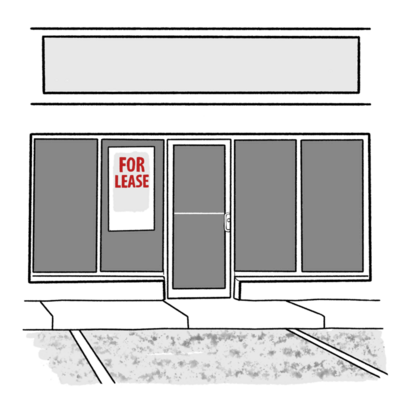
- Quick Read
- Deep Read ( 5 Min. )
Residents of the nation’s capital have been hearing a drumbeat of difficult news – not just about congressional gridlock but about their own neighborhoods.
Two of the city’s signature sports franchises, the Capitals in hockey and the Wizards in basketball, want to move to Virginia. A major employer, mortgage giant Fannie Mae, announced its own plans to do the same. The White House has been waging an uphill struggle for federal workers to make a post-pandemic return to their offices, many of them in the District of Columbia.
People here are still living, lounging, and lobbying. But the nation’s capital city is facing some significant challenges – which are visible too in other U.S. cities that are still struggling to find their footing on the other side of the pandemic.
Some scholars say cities need to think beyond the pre-pandemic norms contingent on a corps of downtown commuters.
“Cities are, in many cases, collections of villages that grew into each other. If we go back to the idea of cities as an archipelago of villages, then we should give more power and control to those villages,” says Joel Kotkin, an urban studies expert. “Safe, urban neighborhoods – that’s what they have to provide.”
District of Columbia scrambles for post-pandemic upturn

Residents of the nation’s capital have been hearing a drumbeat of difficult news – not just about congressional gridlock but about their own neighborhoods.
Two of the city’s signature sports franchises, the Capitals in hockey and the Wizards in basketball, want to move to Virginia. A major employer, mortgage giant Fannie Mae, announced its own plans to do the same. The White House has been waging an uphill struggle for federal workers to make a post-pandemic return to their offices, many of them in the District of Columbia.
All this as violent crime has increased, Metro ridership remains well below pre-2020 norms, and the city is gaining dubious honors in the realm of office vacancies.
It’s not that the district has become an urban wasteland. People here are still living, lounging, and lobbying. But on any given day or night there seem to be fewer of them. Evening crowds are now small groups, and homeless people sleep under storefronts advertising vacancies. The atmosphere is more listless than booming.
In short, the nation’s capital city is facing some significant challenges that are very local, not the stuff of national TV broadcasts. But many of these same challenges are visible, too, in other U.S. cities that are still struggling to find their footing on the other side of the pandemic.
Some experts say it’s becoming a test of how to reinvent urban areas for the next stage in their future. While the solution isn’t yet clear, scholars say cities need to think beyond the pre-pandemic norms contingent on a corps of downtown commuters.
“In many cities, the arenas are what’s propping up the downtown,” says Karen Chapple, director of the School of Cities at the University of Toronto. Meanwhile, she adds, “the remote-work cat is out of the bag.”
For now, Washington may get some breathing room because the proposed move of the Caps and Wizards by owner Ted Leonsis has been blocked in the Virginia legislature. That has revived hopes that the teams – and the resulting consumer spending near their downtown arena – may remain in the capital after all.

The City Council has also pivoted to counter the image of unsafe streets. After overriding Mayor Muriel Bowser to reduce penalties for certain crimes a year ago, the council last week passed a measure designed to reverse course to curb retail theft and carjackings. Ms. Bowser signed it Monday.
Outdated models?
But while Metro ridership has been improving, this still leaves a city with fewer daily commuters. The district has rebounded faster than Chicago and New York, but ranks 46th out of 66 cities in a study by Dr. Chapple and colleagues on post-pandemic recovery.
“The first thing to realize is that what’s happening in D.C. is certainly pretty dramatic compared to what it was before, but it’s not a unique story in terms of office occupancy,” says Charly Porcher, an assistant professor of economics at Georgetown University. He began monitoring remote work rates before the pandemic, when only about 5% of the labor force was working remotely in some form.
The differences between cities can hinge on whether their key industries are ripe for remote employment, he adds. In Washington, about 19% of downtown commercial real estate is currently vacant. One of the city’s biggest industries is tech – which happens to be conducive to remote work.
The changes brought and accelerated by the pandemic only underscore the need for a shift in thought around urban planning, says Joel Kotkin, an urban studies fellow at Chapman University in Orange, California.
In particular, he argues that the long-standing idea of an “urban core” is outdated, as people forgo the Monday-through-Friday commute. Instead, cities should shift their resources and focus to the revitalization of a broader network of smaller urban centers in neighborhoods.
“[Washington has] to come up with some sort of plan for the downtown that isn’t reliant on huge numbers of people working there five days a week,” says Mr. Kotkin.
When residents – not statisticians – discuss the state of downtown, crime is the focus more than office occupancy. And that’s not just the case in Washington. Voters in San Francisco are indicating support for expanding police powers in the face of the city’s crime and drug crisis. And New York Gov. Kathy Hochul recently deployed the National Guard and state police officers to New York City’s subway to patrol and check bags, in response to a large spike in crime.
And as a measure of a city’s overall revival or stagnation, crime statistics are not the most informative piece of the larger puzzle. “It’s really quality of life and overall public safety,” says Dr. Chapple.
Rebuilding safe and vibrant neighborhoods
Still, many residents report feeling unsafe. In Washington, some restaurants have shortened their hours, relocated, or closed entirely, citing high crime rates. And residents in neighborhoods throughout Washington are concerned about the frequency of carjackings and violent crime. Recently, recall petitions were organized against Councilmembers Brianne Nadeau and Charles Allen over what critics say is support of soft-on-crime measures.
Nationwide, police departments are struggling to solve crimes. And while homicide rates are falling in most big cities across the country, they have risen in Washington and some other large cities such as Memphis, Tennessee.
“There’s no question that the increase in violence that was directly associated with the COVID pandemic, we’re still suffering from,” says David Muhammed, executive director of the National Institute for Criminal Justice Reform.
The larger challenge for cities like Washington may be economic. The premise used to be that high-value industries had to be centered in cities. But the office economy – the percentage of jobs in downtowns and the amount of office building construction – has been weakening for decades, says Mr. Kotkin. Whereas many urban planners focus on density and transit as the future, he argues that this no longer aligns perfectly with what people want – which for many, as they reach their 30s, is more space and to own property.
“Cities are, in many cases, collections of villages that grew into each other. If we go back to the idea of cities as an archipelago of villages, then we should give more power and control to those villages,” he says. “Safe, urban neighborhoods – that’s what they have to provide.”

In Pictures
Welcome to Luna Luna, the carnival that time forgot
Amusement parks offer an escape from the doldrums of everyday life. But rather than thrills, this art carnival peddles whimsy and joy.

- Quick Read
- Deep Read ( 2 Min. )
Whimsy is everywhere at Luna Luna: Forgotten Fantasy.
The fact that so many of this art carnival’s “rides” are only for gazing upon hardly lessens the joy.
“You just smile,” says Gina Gallo, an animated-film producer visiting the exhibit. “It’s eye candy for the soul.”
The fanciful pieces, on display this spring in Los Angeles, have roots in Hamburg, Germany, where Austrian multimedia artist André Heller in the 1980s summoned a who’s who of visionaries to think up rides, music, and immersive experiences for an amusement park. Salvador Dalí added a domed, mirrored room; David Hockney created his version of a forest; Jean-Michel Basquiat dreamed up a Ferris wheel.
After its Hamburg run, the park was packed up and put away in storage, where it languished for decades. Rapper Drake helped revive it with a $100 million investment from his entertainment company. Every detail of every structure invites discovery by the exhibit’s visitors even if no one can climb aboard.
“It’s magical,” Mimi Maynard says.
Expand this story to experience the full photo essay.
Welcome to Luna Luna, the carnival that time forgot
Whimsy is everywhere at the art carnival Luna Luna: Forgotten Fantasy. Don’t try to hop on the carousel, though. That’s designed
by Keith Haring, one of the 20th century’s most celebrated artists.
The fact that so many works at Luna Luna, which runs through this spring in Los Angeles, are only for gazing upon hardly lessens the joy.
“You just smile,” says Gina Gallo, an animated-film producer visiting the exhibit. “It’s eye candy for the soul.”
The fanciful pieces have roots in Hamburg, Germany, where Austrian multimedia artist André Heller in the 1980s summoned a who’s who of visionaries to think up rides, music, and immersive experiences for an amusement park. Salvador Dalí added a domed, mirrored room; David Hockney created his version of a forest; Jean-Michel Basquiat dreamed up a Ferris wheel. And music by Philip Glass filled a pavilion by Roy Lichtenstein.
After its Hamburg run, the park was packed up and put away in storage, where it languished for decades. It took rapper Drake to help revive it – with a $100 million investment from his entertainment company. Every detail of every structure invites discovery.
The attractions beckon Mimi Maynard, who runs a production company with Ms. Gallo and a third partner. She says she wishes she could climb aboard.
“It’s magical,” she says.






Other headline stories we’re watching
(Get live updates throughout the day.)The Monitor's View
Resetting Haiti through trust
- Quick Read
- Deep Read ( 3 Min. )
-
By the Monitor's Editorial Board
When a government collapses, the immediate challenge is how to protect innocent civilians. They need security, leadership, and aid. In Haiti, the Caribbean island nation descending into gang chaos, the people are grasping for more than protection. They deeply desire an opportunity to reset their democracy.
The basic building block for that desire is trust among ordinary Haitians. “We can’t reduce the country to just a small minority of people without taking into account the voices of the majority,” said Liné Balthazar, a Haitian political party leader.
By tapping into trust, the country can rely more on a transitional governing council recently set up with the help of nearby countries. It might see multinational security forces finally arrive to quell gang violence. One big step would be international sanctions targeting officials tied to corruption.
Trust, a recent University of Essex paper on Haiti noted, “has been given increased attention as a salient feature of post-conflict societies.” Trust not only determines legitimacy of governments and institutions, but also influences how and whether citizens engage in the work of building stable and productive societies. It thrives amid effective governance that promotes and recognizes local “ownership” and “authorship,” the study found.
Resetting Haiti through trust
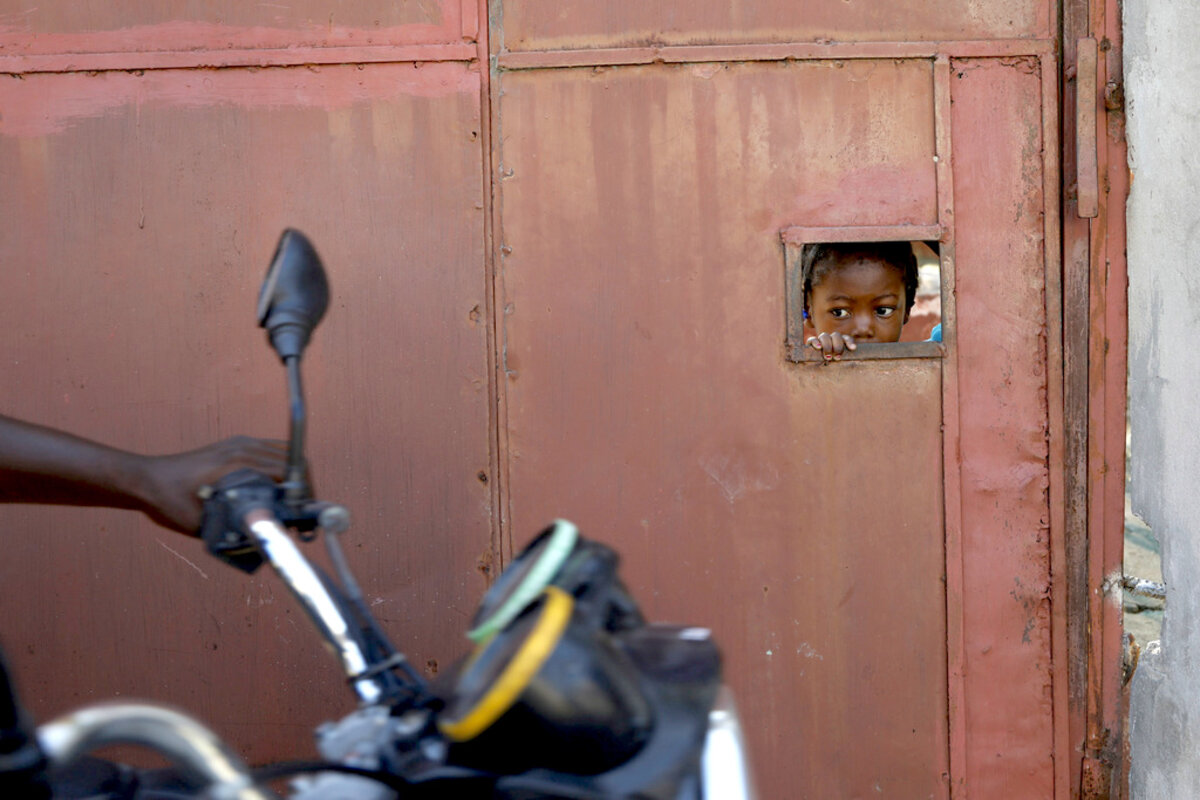
When a government collapses, the immediate challenge is how to protect innocent civilians. They need security, leadership, and aid. In Haiti, the Caribbean island nation descending into gang chaos, the people are grasping for more than protection. They deeply desire an opportunity to reset their democracy.
The basic building block for that desire is trust among ordinary Haitians. “We can’t reduce the country to just a small minority of people without taking into account the voices of the majority,” Liné Balthazar, a Haitian political party leader, told The Miami Herald.
By tapping into trust, the country can rely more on a transitional governing council recently set up with the help of nearby countries. It might see multinational security forces finally arrive to quell gang violence. One big step would be international sanctions targeting officials tied to corruption.
Trust, a recent University of Essex paper on Haiti noted, “has been given increased attention as a salient feature of post-conflict societies.” Trust not only determines legitimacy of governments and institutions, but also influences how and whether citizens engage in the work of building stable and productive societies. It thrives amid effective governance that promotes and recognizes local “ownership” and “authorship,” the study found.
Haitians have sought democratic and economic stability for decades. The immediate crisis has its roots in the 2021 assassination of then-President Jovenel Moïse. His replacement, Ariel Henry, resigned earlier this week after years of putting off elections. On his watch, corruption and gang violence flourished. Some 200 gangs now control more than 80% of the capital, according to the United Nations, and perhaps 100 more hold power elsewhere across the country.
“This is too much of a good crisis to waste,” Fritz Alphonse Jean, a former central banker, told The New York Times. At an emergency summit in Jamaica on Monday, regional leaders announced the framework for the transitional council made up of political leaders, civil society groups, and religious leaders.
Those varied interests are now jostling for the seven seats and two observer positions on the council. Observers worry the competition just shows that Haiti is ungovernable. But the process rests on years of vibrant, inclusive work by civil society groups to restore grassroots trust and chart a restoration of democracy.
The Jamaica summit, in fact, acknowledged the need to build legitimacy through local agency. Some 39 Haitian political and civil society groups helped shape the structure of the transitional presidential council. The multinational security force, to be led by Kenya, includes accountability measures to protect the local population from abuses by foreign troops and will function in close coordination with the Haitian national police.
“It became clear that the country needed a rupture – a clear break with the criminal past,” Monique Clesca, a Haitian civil society leader and former U.N. official, wrote a year ago in Foreign Affairs. She foresaw then that “the goal of the transitional period would be to strengthen government institutions, increase security, and build trust.”
Mr. Henry’s departure has opened a path for renewing governance in Haiti and rethinking international support in fragile states. Such transitions can take years, but Haitians may now be setting a strong foundation.

A Christian Science Perspective
Each weekday, the Monitor includes one clearly labeled religious article offering spiritual insight on contemporary issues, including the news. The publication – in its various forms – is produced for anyone who cares about the progress of the human endeavor around the world and seeks news reported with compassion, intelligence, and an essentially constructive lens. For many, that caring has religious roots. For many, it does not. The Monitor has always embraced both audiences. The Monitor is owned by a church – The First Church of Christ, Scientist, in Boston – whose founder was concerned with both the state of the world and the quality of available news.
A right understanding of God heals
- Quick Read
- Read or Listen ( 4 Min. )
-
By Chiemezi Ahanonu
Getting to know God and His creation as truly and entirely good empowers us to overcome difficulties.
A right understanding of God heals
Assurances of God’s goodness and everlasting love for His creation can be read throughout the Bible. Yet it is not unusual to believe God is capable of both good and evil. Ascribing to God the capacity for evil suggests a limitation to His infinite, all-good nature.
Since the Bible tells us God is Spirit, is it possible to gain a higher, more spiritual concept of God’s nature, and to rely on this understanding in difficult times?
To find within the Bible a reliable, spiritual understanding of an all-good God, we can start with the first chapter of the first book, Genesis. This chapter presents the first record of creation, where evil is not known by God and therefore doesn’t exist anywhere in God’s “very good” creation. According to this account, “God created man in his own image, in the image of God created he him; male and female created he them” (verse 27). This man of God’s, Spirit’s, creating is spiritual, not material.
In Genesis 2, however, we read another account of creation, clearly a material one. This account states, “The Lord God formed man of the dust of the ground, and breathed into his nostrils the breath of life; and man became a living soul” (verse 7).
That God made man is a spiritual fact. But it is commonly believed that the first and second accounts of creation in Genesis are talking about the same man. Referring to the two different creation accounts, Mary Baker Eddy points out in “Science and Health with Key to the Scriptures,” “It may be worth while here to remark that, according to the best scholars, there are clear evidences of two distinct documents in the early part of the book of Genesis” (p. 523). Christian Science teaches that the two versions of creation are not talking about the same God or the same man.
God’s true creation, which He declared to be good, is perfect, eternally harmonious. God is everlasting Love, boundless good, infinite light, and “in him is no darkness at all” (I John 1:5). This elevated view exposes discordant material conceptions as unreal and gives individual human consciousness access to what God is knowing and seeing.
This is more than theory – it’s provable. One particular instance comes to mind. My cousin and I decided to go see a long-abandoned landmark in our village. The entire area was heavily forested, so we brought with us two well-sharpened machetes and followed the footpath leading into the area. We got to a point where the footpath disappeared and decided to create a pathway.
As we hacked our way into the forest, I came upon a very rough-looking and thick climbing plant right in front of me. I assumed it would be tough to cut, so I drove the machete into it with as much force as I could muster. Unfortunately, it turned out to be very soft wood, and the machete easily sliced through it and lodged in my lower leg.
Almost immediately I resisted the urge to dwell on the pain and visible injury. I affirmed to myself that God fills all space, and therefore, good fills all space, including right where I was. And where this infinite good is, evil has no place. I affirmed that the all-knowing God knows only good and therefore has no knowledge of accidents. I was thoroughly convinced that my spiritual individuality was intact and totally unaffected.
Initially, the bleeding was profuse, so my cousin was alarmed. However, the bleeding ceased very quickly on its own. Then he suggested that we go home, which we did. I kept praying the whole way back. Man, as God’s image, is spiritual, reflecting the nature of his Maker, and therefore is not susceptible to injury but is as perfect and harmonious as God is.
When I got home, I freshened up, which included washing the injury. I refused to be impressed by the physical evidence of injury. My practice of Christian Science has given me an understanding of and trust in the fact that good is the only reality.
By that evening, when my cousin visited to check on me, there had been significant progress, and the pain had completely ceased. Just two days later, the injury was completely healed. My cousin couldn’t believe it. Perhaps the most beautiful aspect of this healing is that my cousin is today seriously studying Christian Science.
God knows only what He created, and what He created is good. We can become conscious of this all-good reality right now and know God as He truly is – as the one perfect, holy, all-loving, and infinite Divine Being – and man as God’s reflection.
Adapted from an article published in the Aug. 19, 2019, issue of the Christian Science Sentinel.

Viewfinder
Tractors, pitchforks, and pies

A look ahead
Thank you for joining us today. Tomorrow, Ned Temko will explore an old rule of Mideast peacemaking in his Patterns column. U.S. diplomats have always had a golden rule: “We can’t want peace more than they do.” But what does that mean when Israelis and Palestinians cannot contemplate even speaking to each other?



